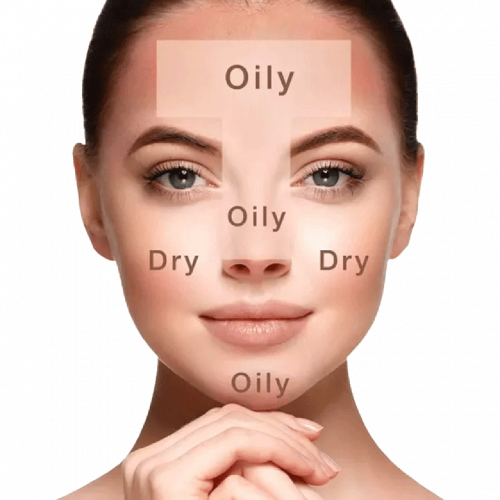Embark on a Journey to Radiant Skin: A Comprehensive Guide to Crafting the Best Skincare Routine for Combination Skin
Do you really want to know the best skincare routine for combination skin – the delicate balance between oily and dry regions? Worry not! We’ve meticulously curated an all-encompassing guide, equipping you with the insights and products necessary to attain that sought-after radiant complexion. Achieving clear, healthy-looking skin is not just a possibility; it’s surprisingly straightforward with the right tools and knowledge.
Decoding Best Skincare Routine for Combination Skin: A Deep Dive
Combination skin, characterized by its dual nature of both oily and dry patches, necessitates a skincare routine that adeptly navigates the delicate equilibrium between hydration and oil control. With the T-zone (forehead, nose, and chin) typically showcasing oiliness and the cheeks and other areas leaning towards dryness, understanding this skin type is the first step to unlocking its potential.
Spotting the Signs of Combination Prodigy Skin
- Oily T-zone: Shine alert specifically on the forehead, nose, and chin.
- Enlarged Pores: Predominantly in the T-zone, contributing to blackheads and pimples.
- Dry Patches: Manifesting on the cheeks and jawline, resulting in dry, flaky, or rough textures.
- Shine: Oily areas exude a shiny or greasy appearance, especially in the T-zone.
- Acne: Prone to breakouts in oily regions, especially when pores become clogged.
- Sensitivity: Some areas may exhibit sensitivity, accompanied by redness or irritation.
- Makeup Challenges: Application becomes a challenge as different areas demand distinct products or formulations for an even, natural look.
Unraveling the Mystery Behind Combination Skin
The causes of combination skin are as diverse as the skin itself. Genetics, hormones, and environmental factors like climate or diet all play integral roles. It’s a delicate dance between the oily and dry, and comprehending this balance is fundamental to achieving clear and healthy skin.
Building Your Combination Skin Arsenal: A Selection of Top-tier Products
1. Gentle Cleanser:
- Why: Removes dirt and makeup without stripping natural oils.
- Look For: Formulated specifically for combination skin.
2. Balancing Toner:
- Why: Maintains pH balance and eradicates impurities.
- Avoid: Toners with alcohol, as they can exacerbate dryness.
3. Hydrating Serum:
- Why: Nourishes and hydrates the skin.
- Seek: Ingredients like hyaluronic acid, vitamin C, or niacinamide.
4. Oil-Free Moisturizer:
- Why: Lightweight hydration without clogging pores.
- Ingredients: Glycerin or ceramides for optimal moisture.
5. Sunscreen Shield:
- Why: SPF protection against harmful rays.
- Must-Have: Oil-free and non-comedogenic sunscreen.
6. Gentle Exfoliation:
- Why: Removes dead cells, revealing smoother skin.
- Ideal Ingredients: Salicylic acid for unclogging pores.
Golden Rules for Glowing Skin: Your Daily Routine to get best skincare routine for combination skin
1. Patch Test First:
- Before introducing new products, ensure they’re compatible with your skin. When in doubt, consult a dermatologist.
2. Consistency is Key:
- Stick to your routine diligently. Skincare is a journey, not a race.
3. Hydration Nation:
- Drink water, keep your body hydrated – it reflects on your skin.
4. Mind the Frequency:
- Exfoliate, but don’t overdo it. Balance is the name of the game.
Mastering the Arts of Exfoliation: A Pro’s Guide
AHAs and BHAs:
- AHAs (Alpha Hydroxy Acids): Derived from fruits and milk, ideal for dry or mature skin.
- BHAs (Beta Hydroxy Acids): Oil-soluble acids from salicylic acid, perfect for oily or acne-prone skin.
Water-Based Formulas:
- Lightweight, hydrating, and easily absorbed by the skin.
- Perfect for those seeking affordable beauty solutions.
Oil-Free, Non-Comedogenic Formulas:
- Cetaphil PRO Oil Control Foam Wash: Deep cleansing without drying.
- Adonis DS Acne Face Wash: Regulates sebum production for a youthful glow.
- Cetaphil Gentle Foaming Cleanser: Removes impurities while preserving moisture.
- Cetaphil PRO Oil Control Moisturizing Lotion: Oil-free, hydrating, with SPF 30.
S.O.S for Dry Under Eyes: Your Moisture Rescue
1. Moisturize Wisely:
- Fragrance-free, hydrating moisturizers with hyaluronic acid or ceramides work wonders.
2. Stay Hydrated:
- Internal hydration reflects on the skin. Drink water liberally.
3. Sleep is Sacred:
- 7-9 hours of sleep aids skin repair and prevents dryness.
4. Sunscreen Magic:
- Shield your delicate under-eye area with SPF to prevent premature aging.
5. Gentle Handling:
- Avoid rubbing – opt for cold compresses to relieve irritation.
The Grand Finale: Face Mask Magic
· Purposeful Selection:
- Choose masks based on your skin concerns – be it hydration, acne, or rejuvenation.
· Proper Application:
- Cleanse before application, apply evenly, and follow instructions diligently.
· Frequency is Key:
- Once or twice a week for that extra boost – don’t overindulge.
Your Skincare Journey: Consistency is Queen
In your pursuit of clear, radiant skin, consistency is your most loyal companion. Understand your skin, choose wisely, and embrace the journey. For persistent concerns, consult with a dermatologist who can tailor advice to your unique needs. Your radiant complexion awaits – let the skincare adventure begin
